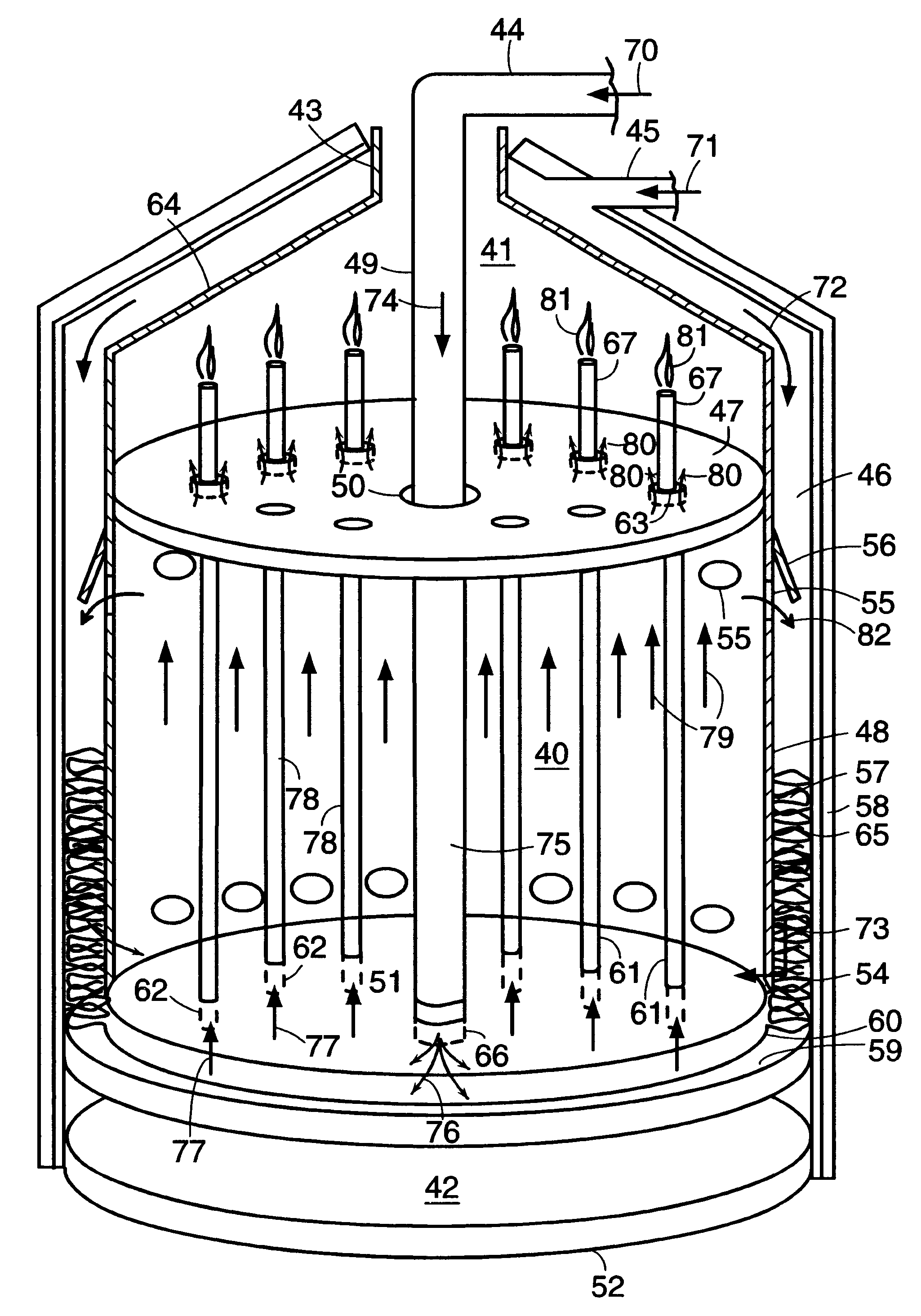Integrated solid oxide fuel cell and reformer
a fuel cell and solid oxide technology, applied in the direction of cell components, electrochemical generators, cell component details, etc., can solve the problems of slow heating up to process temperature, ceramic cracking, and requiring at least 6 hours
- Summary
- Abstract
- Description
- Claims
- Application Information
AI Technical Summary
Benefits of technology
Problems solved by technology
Method used
Image
Examples
Embodiment Construction
With reference to FIG. 1 a plurality of tubular fuel cells 2 generate electricity as fuel passes through the inside and air passes along the outside thereof. Cells of this kind are known in the art, and cells such as those described in "An SOFC Cogeneration System Built From 2 mm Diameter Extruded Tubes",(K Kendall, T W J Longstaff, Second European Solid Oxide Fuel Cell Forum, Lucerne, Switzerland, (May 6-10 1996) p195) are particularly suitable. The cells are mounted on a base plate 5, which forms the top of a reforming chamber 7. In the reforming chamber a reforming catalyst is present, suitable for the conversion of carbon containing fuels into a hydrogen rich mixture.
Air is entering the system through perforated rings 16,17, mounted on the outside of the chamber, passes the cells, and at the ends of the cells is combusted with depleted fuel, leaving the tubes.
The air is brought to the required operating temperature by picking up heat from a heat exchange system, comprising conce...
PUM
 Login to View More
Login to View More Abstract
Description
Claims
Application Information
 Login to View More
Login to View More - R&D
- Intellectual Property
- Life Sciences
- Materials
- Tech Scout
- Unparalleled Data Quality
- Higher Quality Content
- 60% Fewer Hallucinations
Browse by: Latest US Patents, China's latest patents, Technical Efficacy Thesaurus, Application Domain, Technology Topic, Popular Technical Reports.
© 2025 PatSnap. All rights reserved.Legal|Privacy policy|Modern Slavery Act Transparency Statement|Sitemap|About US| Contact US: help@patsnap.com



